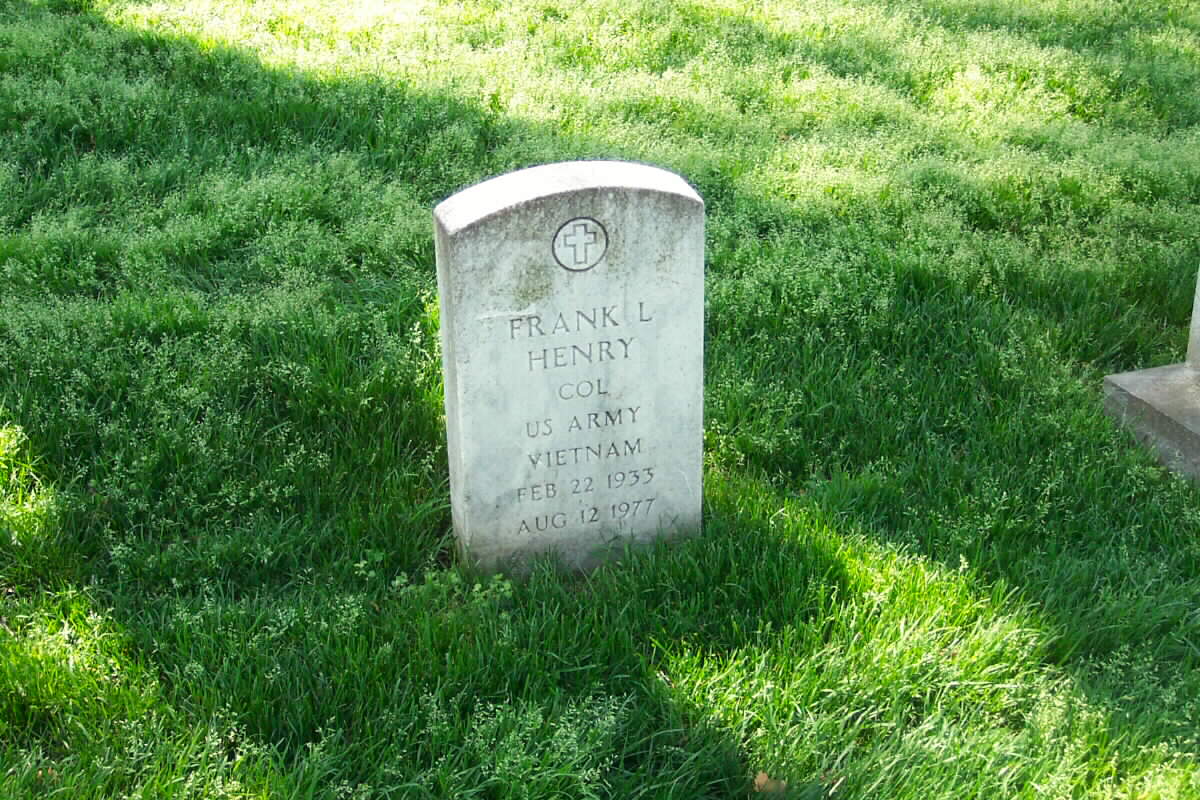Courtesy of United States Army Aviation Hall of Fame:
Colonel Frank Henry made Air Assault happen. He converted the promise and theory of Air Assault into suitable tactics, workable procedures, trained aviation units, and motivated aviators.
His work in demonstrating the potential of Air Assault at Fort Campbell, Kentucky, led to Lieutenant General (then Brigadier General) Kinnard transferring him to Fort Benning as a member of the 11th Air Assault Division Cadre. Henry was given command of the first Huey Gun Company formed in the 11th AAD, Company A, 227th Assault Helicopter Battalion. In that role, he was the lead assault helicopter company commander of the Air Assault Tests and a developer of airmobile procedures later standardized within the test division and used widely by units in Vietnam. His call sign, “Happy Tiger”, describes perfectly his personality and warrior spirit.
General Kinnard selected Henry as his aide and took him to Vietnam when the test division was redesignated the 1st Cavalry Division (Airmobile). Three months later he was assigned as the Executive Officer of the 2nd Battalion, 7th Cavalry where his strong leadership was demonstrated in infantry combat. He returned to the 1st Cav in Vietnam in 1968-1969, distinguishing himself as the Assistant Division Aviation officer and commander, 2d Bn, 8th Cavalry. The Army wisely took advantage of his unique expertise by sending him to the Infantry School from 1969-1972 as a tactics instructor and Chairman of the Aerial Employment Committee.
When the 1st Cavalry Division was tested in the TRICAP configuration in 1972-1974 at Fort Hood, Texas, the Division and III Corps commanders insisted that the Army make Lieutenant Colonel Henry available to command the division’s assault helicopter battalion. After the Army War College, Colonel Henry returned to the troops he loved as Commander, 3rd Brigade, 101st AD (AASLT). When his command tour was completed, the division commander selected him to remain as Chief of Staff, a position he held until his untimely death in August 1977.
Colonel Henry was a truly heroic aviation figure who rose through the ranks, OCS, and Flight School, and earned a masters degree. He did many things well, but was a master at troop command and tactical innovation — precisely the attributes needed in his pioneer air assault assignments.
Colonel Henry was born on 22 February 1933 at Franklin North Carolina, and died on 12 August 1977 at Fort Campbell, Kentucky. He was buried with full military honors in Section 5 of Arlington National Cemetery.
Michael Robert Patterson was born in Arlington and is the son of a former officer of the US Army. So it was no wonder that sooner or later his interests drew him to American history and especially to American military history. Many of his articles can be found on renowned portals like the New York Times, Washingtonpost or Wikipedia.
Reviewed by: Michael Howard

